Indiana Jones and the Temple of Doom
6.5 /10 2 Votes
85% Rotten Tomatoes 57% Metacritic Genre Action, Adventure Country United States | 7.6/10 IMDb 4/4 Roger Ebert Film series Indiana Jones Duration Language English | |||||||||||||||||||||||||||||||||
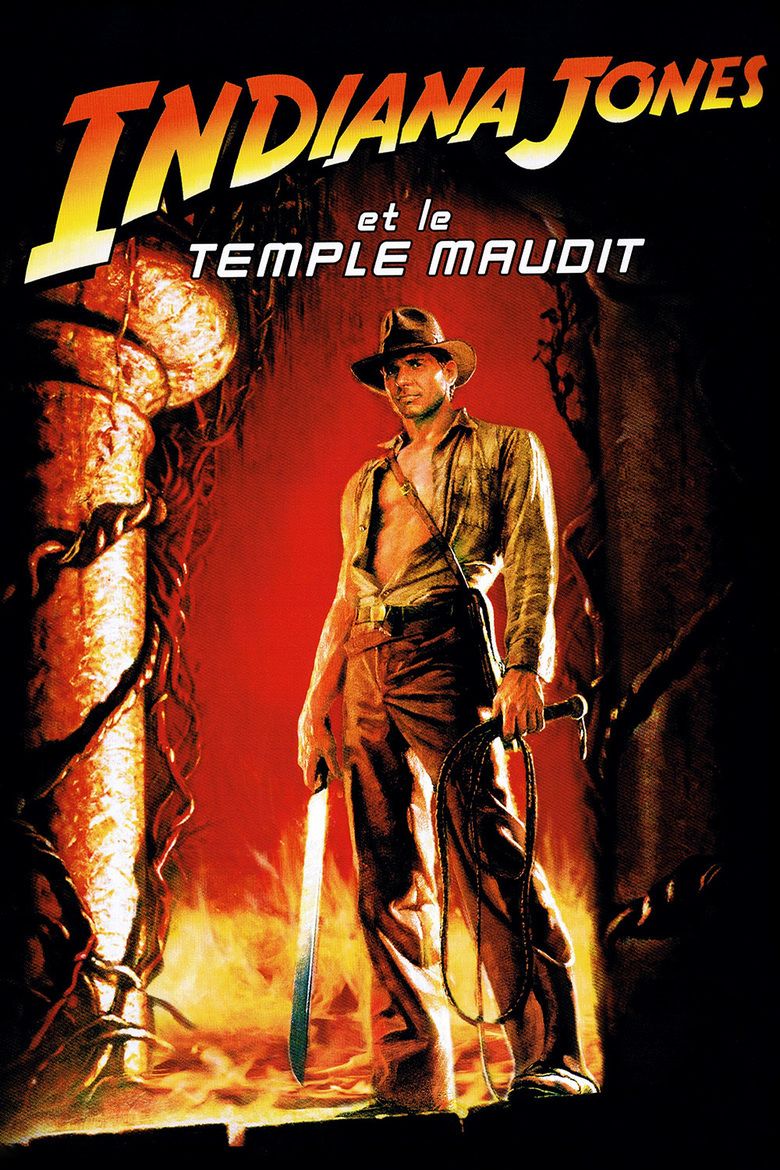 | ||||||||||||||||||||||||||||||||||
Release date May 23, 1984 (1984-05-23) Cast (Indiana Jones), (Wilhelmina "Willie" Scott), (Short Round), (Mola Ram), (Chattar Lal), (Captain Blumburtt) Similar movies , Indiana Jones and the Kingdom of the Crystal Skull , , Lara Croft: Tomb Raider , National Treasure , National Treasure: Book of Secrets Tagline If adventure has a name... it must be Indiana Jones. | ||||||||||||||||||||||||||||||||||
Indiana jones and the temple of doom 1984 movie trailer hd
Indiana Jones and the Temple of Doom is a 1984 American action-adventure film directed by Steven Spielberg. It is the second installment in the Indiana Jones franchise and a prequel to the 1981 film Raiders of the Lost Ark, featuring Harrison Ford reprising his role as the title character. After arriving in North India, Indiana Jones is asked by desperate villagers to find a mystical stone and rescue their children from a Thuggee cult practicing child slavery, black magic and ritual human sacrifice in honor of the goddess Kali.
Contents
- Indiana jones and the temple of doom 1984 movie trailer hd
- Indiana jones and the temple of doom trailer hd
- Plot
- Cast
- Development
- Filming
- Editing
- Box office
- Promotion
- Critical response
- Awards
- Controversy
- References
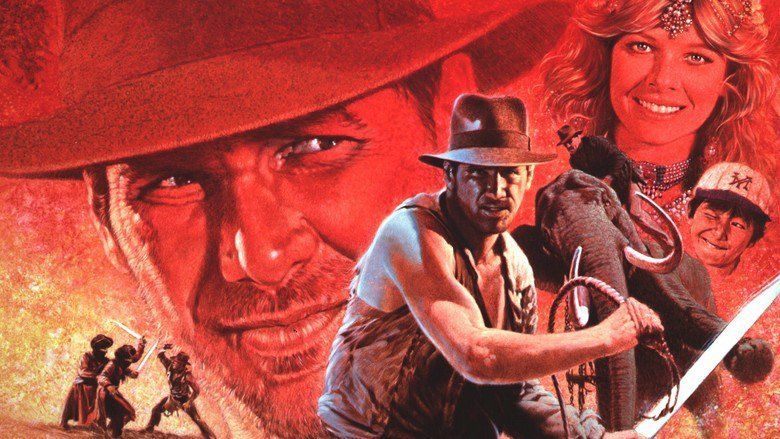
Executive producer and co-writer George Lucas decided to make the film a prequel as he did not want the Nazis to be the villains again. After three rejected plot devices, Lucas wrote a film treatment that resembled the film's final storyline. Lawrence Kasdan, Lucas's collaborator on Raiders of the Lost Ark, turned down the offer to write the script, and Willard Huyck and Gloria Katz were hired as his replacements, with the screenplay partly based upon the 1939 film Gunga Din.
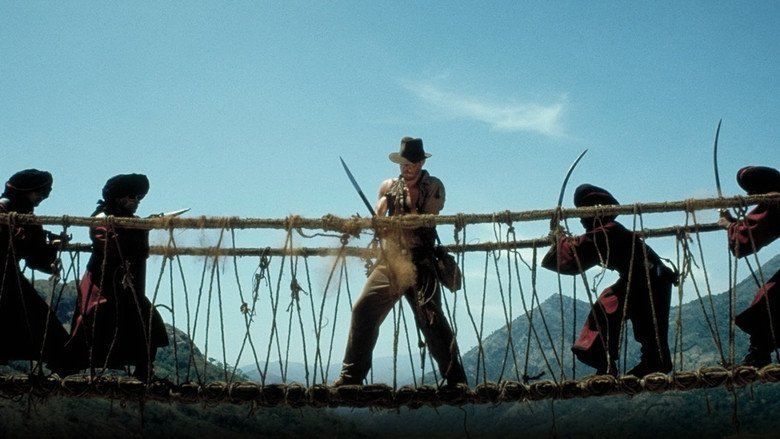
The film was released to financial success but initial reviews were mixed, which criticized its violence, later contributing to the creation of the PG-13 rating. However, critical opinion has improved since 1984, citing the film's intensity and imagination. Some of the film's cast and crew, including Spielberg, retrospectively view the film in a negative light, partly due to the film being the darkest and most overtly violent Indiana Jones film. The film has also been the subject of controversy due to its portrayal of India and Hinduism.

Indiana jones and the temple of doom trailer hd
Plot
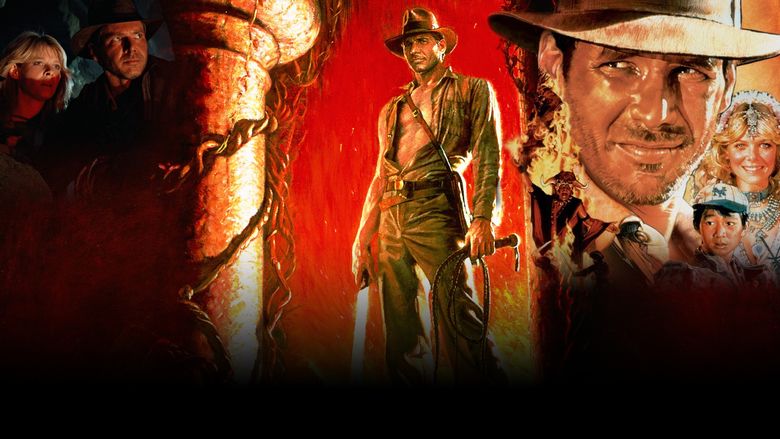
In 1935, Indiana Jones narrowly escapes the clutches of Lao Che, a crime boss in Shanghai, China. With his 11-year-old Chinese sidekick Short Round and the nightclub singer Willie Scott in tow, Indy flees Shanghai on an airplane that, unknown to them, is owned by Lao. While the three of them sleep on the plane, the pilots parachute out, and they leave the plane to crash over the Himalayas while dumping its fuel. Indy, Shorty, and Willie discover this and narrowly manage to escape by jumping out of the plane on an inflatable raft, and then riding down the slopes into a raging river. They come to Mayapore, a village in northern India, where the poor villagers believe them to have been sent by Shiva to retrieve the sacred sivalinga stone stolen from their shrine, as well as the community's children, from evil forces in the nearby Pankot Palace. During the journey to Pankot, Indy hypothesizes that the stone may be one of the five fabled Sankara stones that promise fortune and glory.
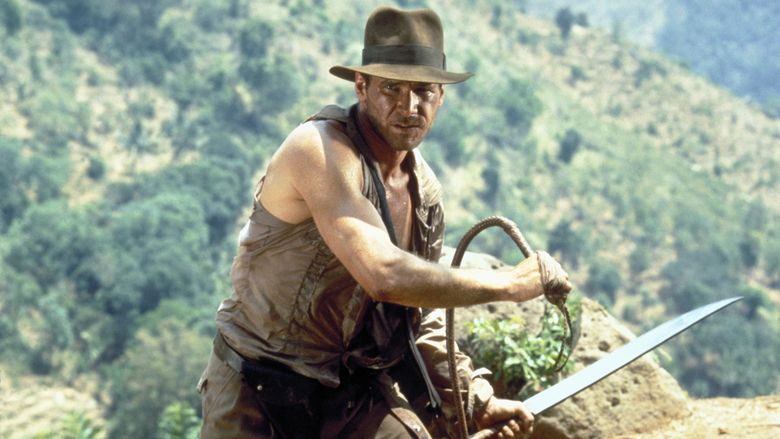
The trio receive a warm welcome from the Prime Minister of Pankot Palace, Chattar Lal. The visitors are allowed to stay the night as guests, during which they attend a lavish but grotesque banquet given by the young Maharaja, Zalim Singh. Chattar Lal rebuffs Indy's questions about the villagers' claims and his theory that the ancient Thuggee cult is responsible for their troubles. Later that night, Indy is attacked by an assassin, leading Indy, Willie, and Shorty to believe that something is amiss. They discover a series of tunnels hidden behind a statue in Willie's room and set out to explore them, overcoming a number of booby-traps along the way.
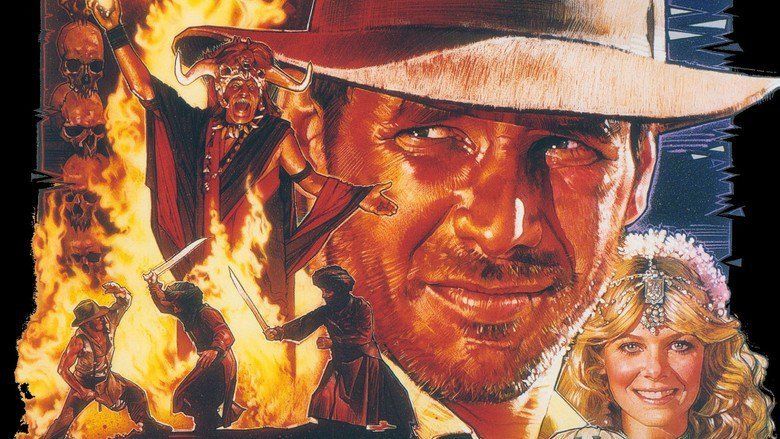
The trio eventually reach an underground temple where the Thugs worship Kali with human sacrifice. They watch as the Thugs chain one of their victims in a cage and slowly lower him into a ceremonial fire pit, burning him alive. They discover that the Thugs, led by their high priest Mola Ram, are in possession of three of the five Sankara stones, and have enslaved the children to mine for the final two stones. As Indy tries to retrieve the stones, he, Willie, and Shorty are captured and separated. Indy is whipped and forced to drink a potion called the Blood of Kali, which places him in a trance-like state where he begins to mindlessly serve the Thugs. Willie, meanwhile, is kept as a human sacrifice, while Shorty is put to work in the mines alongside the enslaved children. Shorty breaks free and escapes back into the temple where he burns Indy with a torch, shocking him out of the trance. After defeating Chattar Lal, Indy stops Willie's cage and cranks it out of the pit just in time before it has a chance to enter the fire. They go back to the mines to free the children, but Indy is caught up in a fight with a hulking overseer. The Maharajah, who was also entranced, attempts to cripple Indy with a voodoo doll. Shorty spars with the Maharajah, ultimately burning him to snap him out of the trance. With his strength returned, Indy kills the overseer. The Maharajah then tells Shorty how to get out of the mines. While Mola Ram escapes, Indy and Shorty rescue Willie and retrieve the three Sankara stones, the village children escape.
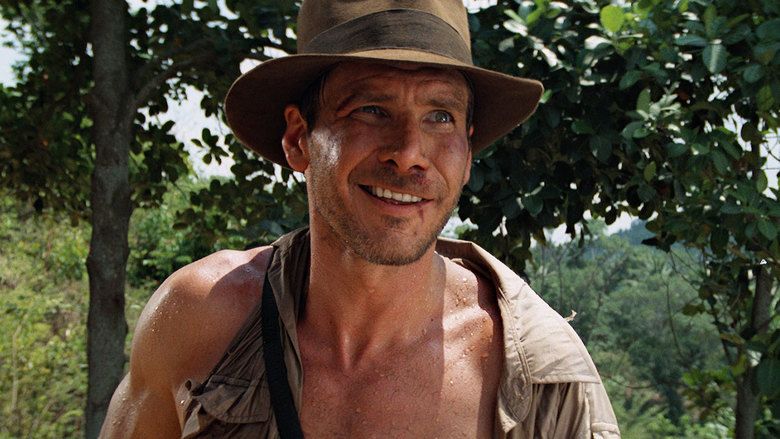
After a mine cart chase to escape the temple, the trio emerge above ground and are again cornered by Mola Ram and his henchmen on a rope bridge high above a crocodile-infested river. Using a sword, Indy cuts the rope bridge in half, leaving everyone to hang on for their lives. Indy utters an incantation which causes the stones to glow red hot. Two of the stones fall into the river, while the last falls into Mola Ram's hand, burning his hand. Indy catches the now-cool stone, while Mola Ram falls into the river below and gets devoured by hungry crocodiles. The Thuggees then attempt to shoot Indy with arrows, until a company of British Indian Army riflemen, summoned by the Maharajah, arrive and open fire on the Thuggee archers. Indy, Willie, and Shorty return to the village with the children and give the missing stone back to the villagers.
Cast
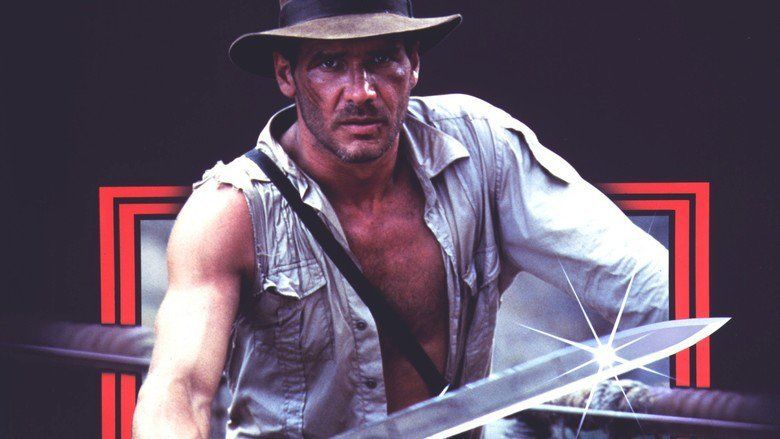
Actor Pat Roach plays the Thuggee overseer in the mines. Spielberg, Lucas, Marshall, Kennedy, and Dan Aykroyd have cameos at the airport.
Development
When George Lucas first approached Steven Spielberg for Raiders of the Lost Ark, Spielberg recalled, "George said if I directed the first one then I would have to direct a trilogy. He had three stories in mind. It turned out George did not have three stories in mind and we had to make up subsequent stories." Spielberg and Lucas attributed the film's tone, which was darker than Raiders of the Lost Ark, to their personal moods following the breakups of their relationships (George with his wife, and Spielberg with his girlfriend). In addition, Lucas felt "it had to have been a dark film. The way Empire Strikes Back was the dark second act of the Star Wars trilogy."
Lucas made the film a prequel as he did not want the Nazis to be the villains once more. Spielberg originally wanted to bring Marion Ravenwood back, with Abner Ravenwood being considered as a possible character. Lucas created an opening chase scene that had Indiana Jones on a motorcycle on the Great Wall of China. In addition, Indiana discovered a "Lost World pastiche with a hidden valley inhabited by dinosaurs". Chinese authorities refused to allow filming, and Lucas considered the Monkey King as the plot device. Lucas wrote a film treatment that included a haunted castle in Scotland, but Spielberg felt it was too similar to Poltergeist. The haunted castle in Scotland slowly transformed into a demonic temple in India.
Lucas came up with ideas that involved a religious cult devoted to child slavery, black magic and ritual human sacrifice. Lawrence Kasdan of Raiders of the Lost Ark was asked to write the script. "I didn't want to be associated with Temple of Doom," he reflected. "I just thought it was horrible. It's so mean. There's nothing pleasant about it. I think Temple of Doom represents a chaotic period in both their [Lucas and Spielberg] lives, and the movie is very ugly and mean-spirited." Lucas hired Willard Huyck and Gloria Katz to write the script because of their knowledge of Indian culture. Gunga Din served as an influence for the film.
Huyck and Katz spent four days at Skywalker Ranch for story discussions with Lucas and Spielberg in early 1982. They later said the early plot consisted of two notions of Lucas': that Indy would recover something stolen from a village and decide whether to give it back, and that the picture would start in China and work its way to India. Huyck says Lucas was very single-minded about getting through meetings, while "Steve would always stop and think about visual stuff."
Lucas' initial idea for Indiana's sidekick was a virginal young princess, but Huyck, Katz and Spielberg disliked the idea. Just as Indiana Jones was named after Lucas' Alaskan Malamute, Willie was named after Spielberg's Cocker Spaniel, and Short Round was named after Huyck's dog, whose name was derived from The Steel Helmet.
Lucas handed Huyck and Katz a 20-page treatment in May 1982 titled Indiana Jones and the Temple of Death to adapt into a screenplay. Scenes such as the fight scene in Shanghai, escape from the airplane and the mine cart chase came from original scripts of Raiders of the Lost Ark.
Lucas, Huyck, and Katz had been developing Radioland Murders (1994) since the early 1970s. The opening music was taken from that script and applied to Temple of Doom. Spielberg reflected, "George's idea was to start the movie with a musical number. He wanted to do a Busby Berkeley dance number. At all our story meetings he would say, 'Hey, Steven, you always said you wanted to shoot musicals.' I thought, 'Yeah, that could be fun.'"
Lucas, Spielberg, Katz and Huyck were concerned how to keep the audience interest while explaining the Thuggee cult. Huyck and Katz proposed a tiger hunt but Spielberg said, "There's no way I'm going to stay in India long enough to shoot a tiger hunt." They eventually decided on a dinner scene involving eating bugs, monkey brains and the like. "Steve and George both still react like children, so their idea was to make it as gross as possible," says Katz.
Lucas sent Huyck and Katz a 500-page transcript of their taped conversations to help them with the script. The first draft was written in six weeks, in early-August 1982. "Steve was coming off an enormously successful movie and George didn't want to lose him," said Katz. "He desperately wanted him to direct (Temple of Doom). We were under a lot of pressure to do it really, really fast so we could hold on to Steve."
A second draft was finished by September. Captain Blumburtt, Chattar Lal, and the boy Maharaja originally had more crucial roles. A dogfight was deleted, as well as those who drank the Kali blood turned into zombies with physical superhuman abilities. During pre-production, the Temple of Death title was replaced with Temple of Doom. From March—April 1983, Huyck and Katz simultaneously performed rewrites for a final shooting script.
Huyck and Katz later said Harrison Ford took many of the one liners originally given to Short Round.
Filming
Huyck later recalled "at one point when we were writing it we told George “We know a lot of Indians. We've been there... I don't think they're going to think this is really so cool. Do you think you're going to have trouble shooting there?” He said, “Are you kidding? It's me and Steve." Months later they called and said, “We can't shoot in India. They're really upset.” So they shot in Sri Lanka and London, mostly.”
The filmmakers were denied permission to film in North India and Amer Fort due to the government finding the script offensive. The government demanded many script changes, rewritings and final cut privilege. As a result, location work went to Kandy, Sri Lanka, with matte paintings and scale models applied for the village, temple, and Pankot Palace. Budgetary inflation also caused Temple of Doom to cost $28.17 million, $8 million more than Raiders of the Lost Ark. Filming began on April 18, 1983 in Kandy, and moved to Elstree Studios in Hertfordshire, England on May 5. Producer Frank Marshall recalled, "when filming the bug scenes, crew members would go home and find bugs in their hair, clothes and shoes." Eight out of the nine sound stages at Elstree housed the filming of Temple of Doom. Lucas biographer Marcus Hearn observed, "Douglas Slocombe's skillful lighting helped disguise the fact that about 80 percent of the film was shot with sound stages."
Danny Daniels choreographed the opening music number "Anything Goes". Capshaw learned to sing in Mandarin and took tap dance lessons. However the dress was fitted so tightly that Capshaw was not able to dance in it. Made by Barbara Matera out of original 1920s and 1930s beads, the dress was one of a kind. The opening dance number was actually the last scene to be shot, but the dress did feature in some earlier location shots in Sri Lanka, drying on a nearby tree. Unfortunately an elephant had started to eat it, tearing the whole back of the dress. Consequently, some emergency repair work had to be done by Matera with what remained of the original beads, and it was costume designer Anthony Powell who had to fill in the insurance forms. As to the reason for damage, he had no option but to put "dress eaten by elephant".
Norman Reynolds could not return for Temple of Doom because of his commitment to Return of the Jedi. Elliot Scott (Labyrinth, Who Framed Roger Rabbit), Reynolds' mentor, was hired. To build the rope bridge the filmmakers found a group of British engineers from Balfour Beatty working on the nearby Victoria Dam. Harrison Ford suffered a severe spinal disc herniation by performing a somersault while filming the scene with the assassin in Jones' bedroom. A hospital bed was brought on set for Ford to rest between takes. Lucas stated, "He could barely stand up, yet he was there every day so shooting would not stop. He was in incomprehensible pain, but he was still trying to make it happen." With no alternatives, Lucas shut down production while Ford was flown to Centinela Hospital on June 21 for recovery. Stunt double Vic Armstrong spent five weeks as a stand-in for various shots. Wendy Leech, Armstrong's wife, served as Capshaw's stunt double.
Macau was substituted for Shanghai, while cinematographer Douglas Slocombe caught fever from June 24 to July 7 and could not work. Ford returned on August 8. Despite the problems during filming, Spielberg was able to complete Temple of Doom on schedule and on budget, finishing principal photography on August 26. Various pick-ups took place afterwards. This included Snake River Canyon, in Idaho, Mammoth Mountain, Tuolumne and American River, Yosemite National Park, San Joaquin Valley, Hamilton Air Force Base and Arizona. Producer Frank Marshall directed a second unit in Florida in January 1984, using alligators to double as crocodiles. The mine chase was a combination of a roller coaster and scale models with dolls doubling for the actors. Minor stop motion was also used for the sequence. Visual effects supervisors Dennis Muren, Joe Johnston and a crew at Industrial Light & Magic provided the visual effects work, while Skywalker Sound, headed by Ben Burtt, commissioned the sound design. Burtt recorded Willie Scott's scream and roller coasters at Disneyland Park in Anaheim for the mine cart scene.
Editing
"After I showed the film to George [Lucas], at an hour and 55 minutes, we looked at each other," Spielberg remembered. "The first thing that we said was, 'Too fast'. We needed to decelerate the action. I did a few more matte shots to slow it down. We made it a little bit slower, by putting breathing room back in so there'd be a two-hour oxygen supply for the audience."
Box office
Temple of Doom was released on May 23, 1984 in America, accumulating a record-breaking $45.7 million in its first week. The film went on to gross $333.1 million worldwide, with $180 million in North America and $153.1 million in other markets. The film had the highest opening weekend of 1984, and was that year's highest-grossing film (third in North America, behind Beverly Hills Cop and Ghostbusters). It was also the tenth highest-grossing film of all time during its release. It sold an estimated 53,532,800 tickets in the US.
Promotion
Marvel Comics published a comic book adaptation of the film by writer David Michelinie and artists Jackson Guice, Ian Akin, Brian Garvey, and Bob Camp. It was published as Marvel Super Special #30 and as a three-issue limited series.
LucasArts and Atari Games promoted the film by releasing an arcade game. Hasbro released a toy line based on the film in September 2008.
Critical response
The film received mixed reviews upon its release, but over the years the film's reception has shifted to a more positive tone. On Rotten Tomatoes, the film has an approval rating of 85%, based on 63 reviews, with an average rating of 7.3/10. The site's critical consensus reads, "It may be too "dark" for some, but Indiana Jones and the Temple of Doom remains an ingenious adventure spectacle that showcases one of Hollywood's finest filmmaking teams in vintage form." On Metacritic the film has a rating of 57 out of 100, based on reviews from 14 critics, indicating "mixed or average reviews".
Roger Ebert gave the film a perfect four-star rating, calling it "the most cheerfully exciting, bizarre, goofy, romantic adventure movie since Raiders, and it is high praise to say that it's not so much a sequel as an equal. It's quite an experience." Vincent Canby felt the film was "too shapeless to be the fun that Raiders is, but shape may be beside the point. Old-time, 15-part movie serials didn't have shape. They just went on and on and on, which is what Temple of Doom does with humor and technical invention." Neal Gabler commented that "I think in some ways, Indiana Jones and the Temple of Doom was better than Raiders of the Lost Ark. In some ways it was less. In sum total, I'd have to say I enjoyed it more. That doesn't mean it's better necessarily, but I got more enjoyment out of it." Colin Covert of the Star Tribune called the film "sillier, darkly violent and a bit dumbed down, but still great fun." Pauline Kael, writing in The New Yorker, claimed it was "one of the most sheerly pleasurable physical comedies ever made." Halliwell's Film Guide described the film as a "slow-starting adventure romp with much ingenuity and too much brutality and horror."
Dave Kehr gave a largely negative review; "The film betrays no human impulse higher than that of a ten-year-old boy trying to gross out his baby sister by dangling a dead worm in her face." Ralph Novak of People complained "The ads that say 'this film may be too intense for younger children' are fraudulent. No parent should allow a young child to see this traumatizing movie; it would be a cinematic form of child abuse. Even Harrison Ford is required to slap Quan and abuse Capshaw. There are no heroes connected with the film, only two villains; their names are Steven Spielberg and George Lucas." The Observer described it as "a thin, arch, graceless affair." The Guardian summarized it as "a two-hour series of none too carefully linked chase sequences ... sitting on the edge of your seat gives you a sore bum but also a numb brain." Leonard Maltin gave the movie only 2 out of 4 stars, saying that the film is "headache inducing" and "never gives us a chance to breathe", and chiding the "'gross-out' gags."
Kate Capshaw called her character "not much more than a dumb screaming blonde." Steven Spielberg said in 1989, "I wasn't happy with Temple of Doom at all. It was too dark, too subterranean, and much too horrific. I thought it out-poltered Poltergeist. There's not an ounce of my own personal feeling in Temple of Doom." He later added during the Making of Indiana Jones and the Temple of Doom documentary, "Temple of Doom is my least favorite of the trilogy. I look back and I say, 'Well the greatest thing that I got out of that was I met Kate Capshaw. We married years later and that to me was the reason I was fated to make Temple of Doom."
In 2014, Time Out polled several film critics, directors, actors and stunt actors to list their top action films. Indiana Jones and the Temple of Doom was listed at 71st place on this list.
Awards
Dennis Muren and Industrial Light & Magic's visual effects department won the Academy Award for Best Visual Effects at the 57th Academy Awards. Soundtrack composer John Williams was, as he had been for his work on Raiders of the Lost Ark, again nominated for Original Music Score. The visual effects crew won the same category at the 38th British Academy Film Awards. Cinematographer Douglas Slocombe, editor Michael Kahn, Ben Burtt and other sound designers at Skywalker Sound received nominations. Spielberg, the writers, Harrison Ford, Jonathan Ke Quan, Anthony Powell and makeup designer Tom Smith were nominated for their work at the Saturn Awards. Temple of Doom was nominated for Best Fantasy Film but lost to Ghostbusters.
Controversy
The film's depiction of Hindus caused controversy in India, and brought it to the attention of the country's censors, who placed a temporary ban on it. The depiction of the goddess Kali as a representative of the underworld and evil was met with much criticism, as she is almost exclusively depicted as a goddess of change and empowerment (Shakti), meaning that while she does destroy, she almost always does so in order to effect positive change. The depiction of Indian cuisine was also criticized, as dishes such as baby snakes, eyeball soup, beetles, and chilled monkey brains are not actual Indian foods. Shashi Tharoor has condemned the film and has criticised numerous parts of the film as offensive and factually inaccurate. Yvette Rosser has criticized the film for contributing to negative stereotypes of Indians in Western society, writing "[it] seems to have been taken as a valid portrayal of India by many teachers, since a large number of students surveyed complained that teachers referred to the eating of monkey brains."
References
Indiana Jones and the Temple of Doom WikipediaIndiana Jones and the Temple of Doom IMDbIndiana Jones and the Temple of Doom Rotten TomatoesIndiana Jones and the Temple of Doom Roger EbertIndiana Jones and the Temple of Doom MetacriticIndiana Jones and the Temple of Doom themoviedb.org
